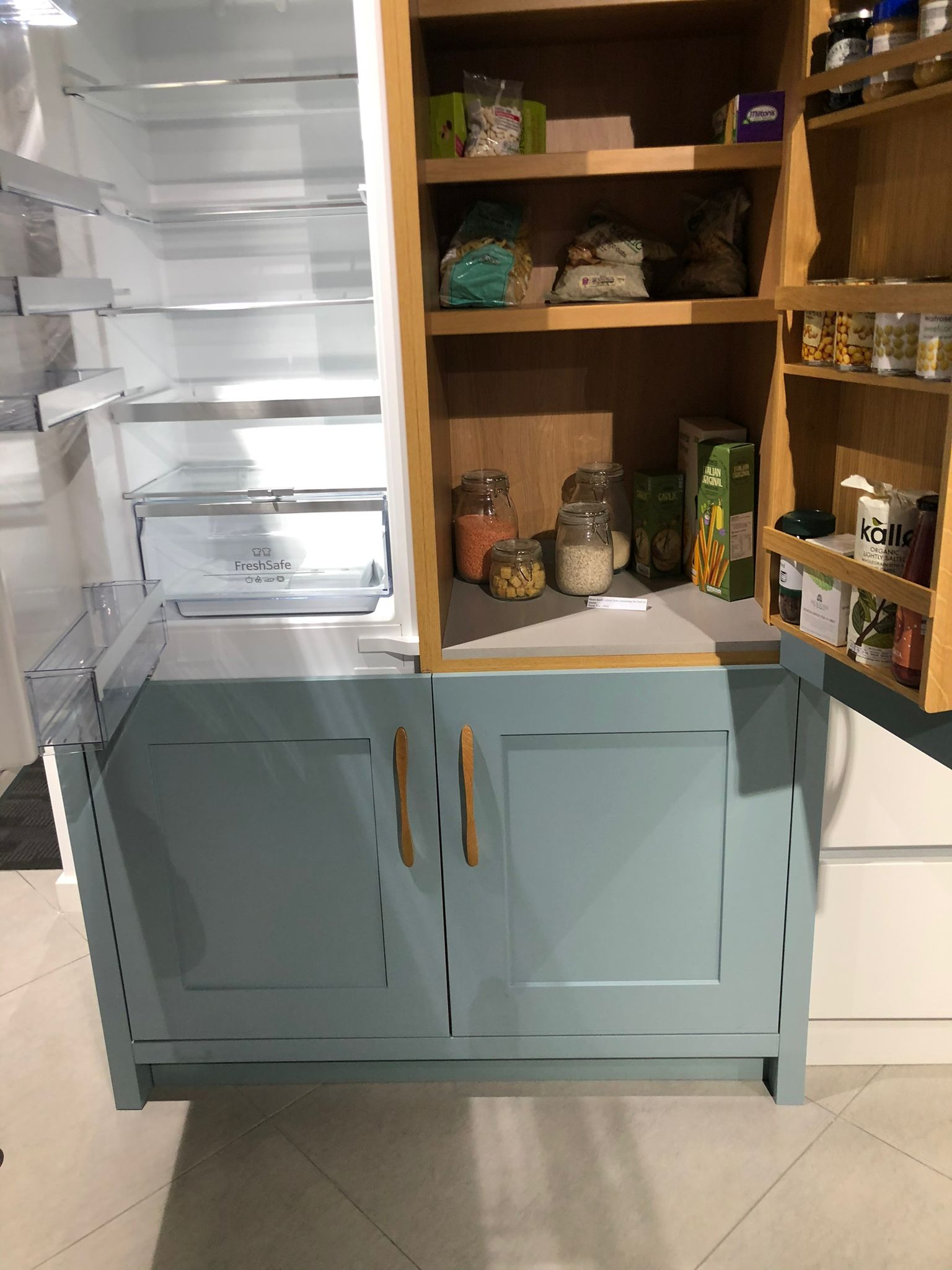Larder cabinet maintenance
Contents |
[edit] Top Tips
Larder cabinets are a common feature in modern kitchens, offering both style and functionality. Whether you have a single larder cabinet or multiple kitchen larder cabinets, proper maintenance is crucial to ensure they remain in top condition and serve you well for years. In this blog, we’ll explore the best practices for maintaining and caring for your larder cabinets.
[edit] Regular cleaning
Keeping your larder cabinet clean is the first step in ensuring its longevity. Regularly wipe down the exterior and interior surfaces with a damp cloth and mild detergent. Avoid using harsh chemicals that can damage the finish. For wooden larder cabinets, consider using a wood-specific cleaner to preserve the natural look and feel.
[edit] Organise efficiently
Proper organisation within your kitchen larder cabinets can prevent damage and make them easier to maintain. Use storage bins, baskets, and shelf dividers to keep items neatly arranged. Heavy items should be placed on lower shelves to avoid putting excessive weight on upper shelves, which can cause them to warp or sag over time.
[edit] Inspect for damage
Periodically inspect your larder cabinet for any signs of wear and tear. Look for loose hinges, sagging shelves, or scratches on the surface. Addressing these issues promptly can prevent further damage. Tighten loose screws, replace damaged hinges, and repair or touch up scratched surfaces as needed.
[edit] Protect from moisture
Excessive moisture can be detrimental to larder cabinets, especially those made of wood. Ensure your kitchen is well-ventilated to reduce humidity levels. Avoid placing wet items directly on the shelves and clean up any spills immediately to prevent water damage.
[edit] Use cabinet liners
Cabinet liners can protect the interior surfaces of your larder cabinet from spills, stains, and scratches. They are especially useful in kitchen larder cabinets where you store food items. Liners can be easily removed and cleaned, providing an additional layer of protection.
[edit] Avoid overloading
Overloading your larder cabinet can lead to structural damage. Pay attention to the weight limits of the shelves and avoid placing too many heavy items inside. Distribute weight evenly across the shelves to prevent them from bowing or breaking.
Routine lubrication
If your larder cabinet has sliding drawers or doors, ensure they are functioning smoothly by applying a lubricant to the tracks and hinges. This will prevent squeaking and ensure that the moving parts do not wear out prematurely.
Use coasters and trivets
When placing hot or wet items inside your larder cabinet, use coasters and trivets to protect the surfaces from heat and moisture damage. This is particularly important for wooden kitchen larder cabinets, as heat and moisture can cause the wood to warp or discolour.
For bespoke or high-end larder cabinets, such as those in Richmond, it may be worthwhile to schedule professional maintenance. Experts can provide detailed inspections and perform any necessary repairs, ensuring your larder cabinet remains in pristine condition.
Investing in high-quality larder cabinets can make maintenance easier and extend their lifespan. Larder cabinets UK made from durable materials and excellent craftsmanship, such as those available in the UK, are more likely to withstand daily wear and tear.
[edit] Conclusion
Maintaining and caring for your larder cabinet is essential to ensure its longevity and keep your kitchen looking great. By following these tips, you can protect your investment and enjoy the benefits of a well-organised and functional kitchen larder cabinet for years to come. Whether you have a single larder cabinet or a complete set of kitchen larder cabinets, these practices will help you keep them in top shape. For those in the UK, including Richmond, consider professional maintenance services to preserve the beauty and functionality of your bespoke larder cabinets.
[edit] Related articles in Designing Buildings
- Aumbry.
- Carcass.
- Chattels.
- Closet.
- Designing a small kitchen.
- Dining room.
- Domestic building.
- Drying room - Scotland.
- Equipment.
- Fixtures.
- Furniture.
- Furniture fixtures and equipment.
- Garderobe.
- Household.
- Hearth.
- Installing a kitchen.
- Moores reveals the top five kitchen design trends for the housebuilding industry.
- Mud room.
- Pantry, buttery, larder and scullery.
- Room data sheet.
- Sanitaryware.
- Seven tips to design a safe, efficient and comfortable family kitchen
- Smart kitchen appliances.
- Storage.
- Tongue and groove joint.
- Types of dwelling.
[edit] External Links
Featured articles and news
Amendment to the GB Energy Bill welcomed by ECA
Move prevents nationally-owned energy company from investing in solar panels produced by modern slavery.
Gregor Harvie argues that AI is state-sanctioned theft of IP.
Heat pumps, vehicle chargers and heating appliances must be sold with smart functionality.
Experimental AI housing target help for councils
Experimental AI could help councils meet housing targets by digitising records.
New-style degrees set for reformed ARB accreditation
Following the ARB Tomorrow's Architects competency outcomes for Architects.
BSRIA Occupant Wellbeing survey BOW
Occupant satisfaction and wellbeing tool inc. physical environment, indoor facilities, functionality and accessibility.
Preserving, waterproofing and decorating buildings.
Many resources for visitors aswell as new features for members.
Using technology to empower communities
The Community data platform; capturing the DNA of a place and fostering participation, for better design.
Heat pump and wind turbine sound calculations for PDRs
MCS publish updated sound calculation standards for permitted development installations.
Homes England creates largest housing-led site in the North
Successful, 34 hectare land acquisition with the residential allocation now completed.
Scottish apprenticeship training proposals
General support although better accountability and transparency is sought.
The history of building regulations
A story of belated action in response to crisis.
Moisture, fire safety and emerging trends in living walls
How wet is your wall?
Current policy explained and newly published consultation by the UK and Welsh Governments.
British architecture 1919–39. Book review.
Conservation of listed prefabs in Moseley.
Energy industry calls for urgent reform.

























